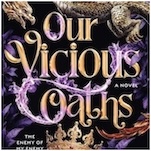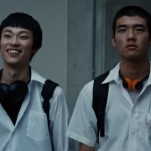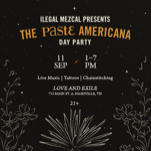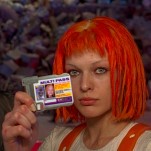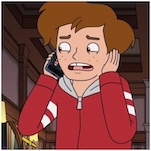Paste Interviews the Artists behind the Disney Princesses Promoting Women’s Health
Illustration by Maritza Lugo and Danielle Sepulveres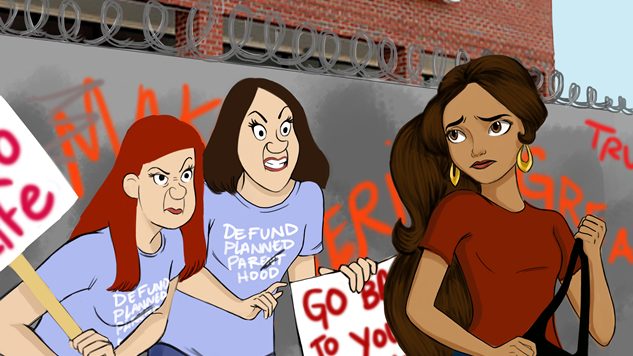
Two fairy godmother feminist artists have created a captivating way to break the spell of stigma surrounding sexual health and wellness. Inoculating their subjects from slut-shaming by employing some of our culture’s most innocent characters, for the second time, Maritza Lugo and Danielle Sepulveres have used the masses’ beloved Disney princesses to drive their message and illustrate the serious and sustained need for access to quality reproductive care.
An outspoken activist artist, Maritza Lugo’s concepts and illustrations have been featured on sites from Hello Giggles to Vice’s Broadly, and she opened 2017 by organizing and co-hosting a landmark art show in Hollywood featuring art only from women of color: MissRepresentation. She had previously been applauded for her illustrated juxtaposition of Disney princesses and typography with hip-hop lyrics, and when writer Danielle Sepulveres invited her to apply the concept to a social justice project, Maritza exclaimed “It was just a brilliant idea, and as someone who derives a lot of inspiration from pop culture, I had to say yes!”
Sepulveres is the author of the critically-acclaimed memoir Losing It: The Semi-Scandalous Story of an Ex-Virgin and an advocate for reproductive health awareness and sex education.
“I explained that I was looking to make a splash for Cervical Cancer Awareness Month,” Sepulveres reflected, “because it tends to largely be ignored by mainstream media and she was immediately onboard. I had specific scenarios in mind for the princesses but Maritza inserted details beyond what I even described to make that series as impactful as it ended up being.”
“Once Trump was elected, we knew we couldn’t just keep our mouths shut,” Lugo added. The duo opened up about teaming up again and talked about how their art came together.
Paste: Tell me about how you came to doing this set of Disney princesses at the gynecologist for the second consecutive year. I saw that conservatives were encouraging Disney to sue in 2016: did you ever hear a peep from Disney in any fashion on that last set? To me, it’s clearly parody and protected speech, but I only took a few law classes at community college, so I’m curious—given the power of social media—how far that got.
Maritza Lugo: After that, we did not get sued exactly for the reasons you list. We did notice some strange activity with weird IP addresses. I will always love the internet. Even with all its flaws, it has a way of connecting us. The power of social media is real. I was able to curate an art show based out of Instagram and other social platforms. It has the power to unite us.
Danielle Sepulveres: I consulted some legal professionals last year who assured me that it was parody and falls under fair use and that as long as we weren’t trying to sell the images and profit off of Disney’s property, that kept us in the clear. I knew that Maritza and I would do something again this year, but I wasn’t sure it would be Disney Princesses again until Trump got elected, and it occurred to me that we could revitalize the series to portray how quickly things can change in a year.
Paste: Cinderella’s stepsisters as clinic protesters and xenophobes is perfect. What was the most inflammatory and/or ridiculous comment/opinion that taking the princesses to the gynecologist has brought out in people? What has been the most frightening?
Sepulveres: I can’t take credit for the stepsisters. Which I agree is genius. I explained to Maritza that I had this idea about the Latina princess trying to get to Planned Parenthood but that there would be a wall there. And she immediately jumped in with the perfect idea of the stepsisters picketing. The most ridiculous thing I’ve heard is that Maritza and I are destroying children’s innocence by putting these images out in the world.
We’re not parents. We’re artists creating work that contains an important message to spark discussion. And in my opinion, if a younger child did come across these images on the internet and asked a parent about them, I don’t see how it’s harmful to explain that healthcare is an important right to all people. I feel lucky to be able to say that most comments have been positive, and the majority of the negative ones come from people who want to scream about the murder of babies, but sometimes it’s frightening in general to see that people can respond with such vitriol when calling us bitches while spouting off paragraphs of overly zealous religious beliefs.
Lugo: Danielle wrote me and said there should be a Planned Parenthood and a wall. I added the protesters because they seem to make an already crucial or unpleasant decision even worse—in regards to abortion. Just visiting a Planned Parenthood under normal circumstances is made awful by these protesters pushing their agenda. Cinderella’s stepsisters were god-awful. Of course, they’d picket their local Planned Parenthood. The absolute worst is usually trolls or people that go on about us killing the innocence of children but I think a lot of things have been doing that much longer before we ever came along.
Paste: In regard to my last question, Feministing.com founder Jessica Valenti has unfortunately noted that writing and publishing feminist content on social media automatically affixes a target to a woman’s back. More than criticism, we’ve all seen that avalanche into doxing and threats of violence for many outspoken female creatives online. Did you consider the possibility of any sort of advanced backlash and how you’d handle that if it became an issue? How did you gather the courage to make a statement like this in this political climate, twice no less?
Sepulveres: It’s disgusting how often it happens, and I’ve seen the harassment online of friends Ella Dawson and Lauren Duca escalate in a way that makes me lose faith in humanity. The majority of the backlash against us in the past tended to be from anti-vaxxers, which I’m used to hearing. This year it feels like we took a bigger risk considering how the election of Trump has seemed to make people feel free to behave more openly in misogynistic actions. I still think that what we have to say is too important to be afraid to say it. It feels like in this political climate, if you can have a platform to use your voice to show support and allyship, you have more of a responsibility than ever to use it.

Illustration by Maritza Lugo and Danielle Sepulveres
Paste: In your series, Jasmine and Aladdin are being legally compelled to have a funeral for their miscarried fetus. Lawmakers in Indiana, Ohio, South Carolina, and Mississippi have all recently considered burial and cremation requirements, and Arkansas and Georgia already have similar statutes in place. It also brings specifically to mind Purvi Patel, who was infamously sentenced to 20 consecutive years in prison (later reduced) for having a miscarriage in Indiana. So, it’s safe to say that Jasmine and Aladdin have found themselves settling down in Indiana, no?
Sepulveres: Haha, it does look like they settled down in Indiana! Which incidentally, is also a place full of wonderful people who do not support Mike Pence and his policies. I’ve visited and experienced it firsthand. This image was a nod to Purvi Patel and for sure the darkest of our illustrations, but we felt it was necessary.
Paste: Obviously Pence’s religious beliefs dictate his political action to a startling degree. How do you think women will continue to fight back against this kind of inevitable overreach on a national level, with conservatives in control at every political post?
Sepulveres: It’s going to be really difficult. People with these kind of religious beliefs believe in conscience clauses and fiercely debate the beginning of human personhood in ways that make it clear how they want to legislate towards women without recognizing us as autonomous human beings. We have to focus on the midterm elections and getting seats back. We also have to protect Planned Parenthood with donations, and we have to keep calling our reps and bombarding them with the realities of how religious beliefs clash with basic rights to healthcare.
[Editor’s note: If you want to call your representative, but don’t know who or where to call, go to whoismyrepresentative.com and just input your zip code, click on the representative, and boom—there’s the number for your district.]
Paste: A fitting example of fighting back against policies which negatively affect women is Ariel making her voice heard by calling Mitch McConnell. Without spoiling any future projects, what other characters would you consider making a ‘part of our world?’

Illustration by Maritza Lugo and Danielle Sepulveres
Sepulveres: There were many people who were disappointed we didn’t have Ariel last time, so we already knew we’d be using her for this series. As you said—it seemed especially appropriate to us since her story had been about sacrificing her voice. We also took into account what would seem kind of shocking for these characters. Maritza said to me last year, “you want me to put Mulan in the STIRRUPS?!” And she was right—that’s a jolting image. For future projects, I’m not sure yet? But I loved Moana because she was more of an action hero/princess, so that’s on the table for future possibilities. We’re going to need some badass action heroes these next four years.
Paste: How did you select these specific characters and their stories for these vignettes?
Sepulveres: We felt from the beginning that it was important to show diversity, considering the Disney princesses unfortunately displayed a lack of it for a long time, which is why we loved using Elena of Avalor this time around. We loved using Jasmine, Tiana and Mulan last time. Before I approached Maritza last year I asked on my Facebook page who everyone’s favorite Disney princess was and utilized that in deciding, as well as going back and forth with Maritza about it.
Paste: What Disney villain would/will you turn into Donald Trump?
Lugo: Donald Trump is absolutely a mixture of Gaston, Scar, and Governor Ratcliffe. For Danielle and I, I think it’s safe to say that no character is untouchable. They’re all a part of our pop culture narrative. Gaston is definitely the worst. Like, omg.
Sepulveres: I think Maritza would have a great time turning Trump, Tom Price, Mike Pence, Rex Tillerson, et al into some Disney villains, we’ll have to talk about that.
Paste: Who do you consider to be the most misogynistic Disney character? Beauty and the Beast springs to mind immediately for me, but what do you think is the most misogynistic Disney story?
Sepulveres: I guess in general many Disney stories are misogynistic because my takeaway as a kid was always that the main goal was to get to your prince and live happily ever after. I’m glad to see that’s changed with Mulan, Brave, Moana, etc… Gaston in Beauty and the Beast is high on my list as the most misogynistic character.
I think a lot of us get hit on by live action Gastons in New York bars all the time. John Smith from Pocahontas is up there too.
Paste: Statistically, men don’t take many preventative measures in their sexual health. I’d love to see the Disney princes take on reproductive health on their own as well. Is that an avenue you’d ever want to explore?
Sepulveres: We have discussed Disney princes, actually! We debated doing them last spring for STD Awareness month, but instead we went with superheroes like Luke Cage, Deadpool, Superman, Batman, etc…

Illustration by Maritza Lugo and Danielle Sepulveres
Paste: Speaking of Belle, in your series, she can no longer afford her birth control, which is a possibility many women will face after lawmakers’ clandestine overnight decision-making in early January. But Belle made the best of a terrible situation in her story—what alternatives do you think modern women will turn to if their birth control access continues to be throttled? An increase in female condoms, a return to the 1990s throwback, The Sponge, etc.? The reemergence of the IUD as a go-to has been surprising, for example.
Sepulveres: I do think that can be expected. Women are nothing if not incredibly resourceful and resilient because our entire lives we’ve had to be. We’ve never stopped fighting for a seat at the table as exhausting as it is to acknowledge that it never ends. Just the immediate pop up of supportive communities since the election makes me hopeful that we can inform each other how to combat this situation if the GOP continues to restrict our basic healthcare access.
Paste: You wove in the Dakota Access Pipeline and Flint, showcasing Pocahontas as a Native American with a reproductive illness borne from contaminated water. I think that was a critical message to include—as DAPL is only on hold, not fully canceled, and Flint is still in the on-going struggle, too often forgotten. What other social issues would you like to have been able to tackle, or will maybe take on in the future?

Illustration by Maritza Lugo and Danielle Sepulveres
Sepulveres: Maritza had suggested adding Pocahontas in reference to DAPL which I thought was so important, and then my wheels started turning about pre-existing conditions and also how healthcare on a reservation does differ from other places. Plus, the more and more I thought about it, the correlation between John Smith and Trump’s behavior towards young girls seemed another point to tackle.
Flint is something that we cannot forget. People in our own country do not have clean water, it’s horrifying and unacceptable what all those families are facing and it’s disturbing that it’s gone on for so long. I’ve contemplated the idea of doing something that helps eradicate stigma towards mental health, towards disabilities. Honestly if I had my way, (cough cough, if someone wanted to fund us) Maritza and I would tackle one social issue a month.
Lugo: I told Danielle that we needed Pocahontas, and to think of a way to interweave DAPL into the mix. Her amazing brain did the rest, I just drew it. Personally, for me, Pocahontas’ child has been contaminated (thus the kiddie water poster in the back). Her fury is that of any mother who has been told “Oh well, tough shit”. Flint, DAPL, Black Lives Matter—are things of such extreme importance to myself (as well as others) that they can not be forgotten, nor should they be. If making the social issues more approachable via caricatures is the way to go, then I am always available. These are the realities for a lot of people and they should get more than a Facebook post.
Sepulveres: I feel that the biggest takeaway is that no matter what the GOP tries to take away from us, we’ll never stop standing up for what’s right. Whether we go to protests, call our reps, make art, we won’t be silenced.
Lugo: More than anything, I am always grateful for those who share our projects. I’m always happy to work with Danielle, and we make an amazing team.
Danielle Sepulveres’ memoir on sexual healthcare was recently optioned for a film, and she is currently writing two new books: a YA novel, and a non-fiction collection of essays. You can find her on Twitter @ellesep and at daniellesepulveres.com. Maritza Lugo is on Twitter @polaroidrage as well as Tumblr.


















